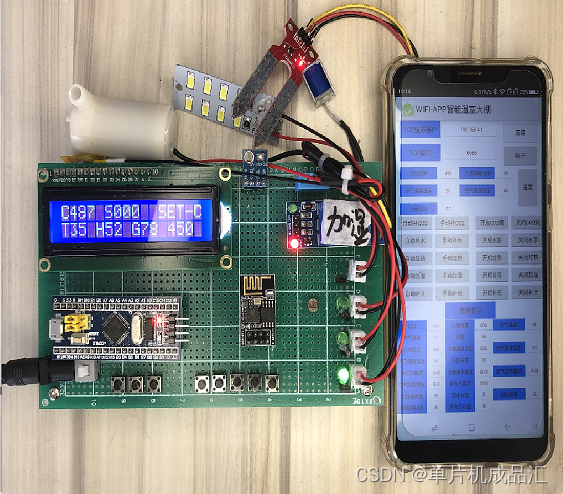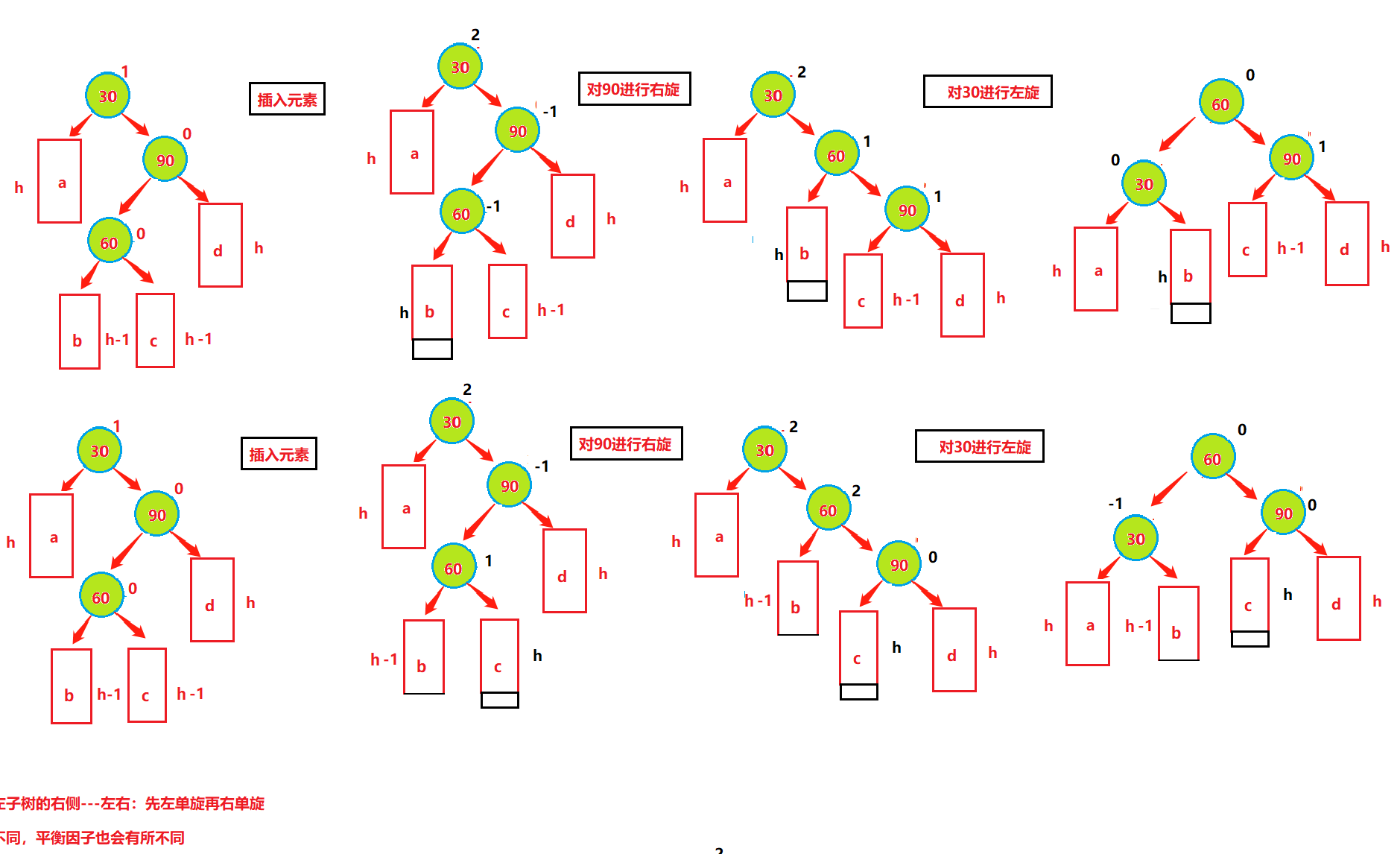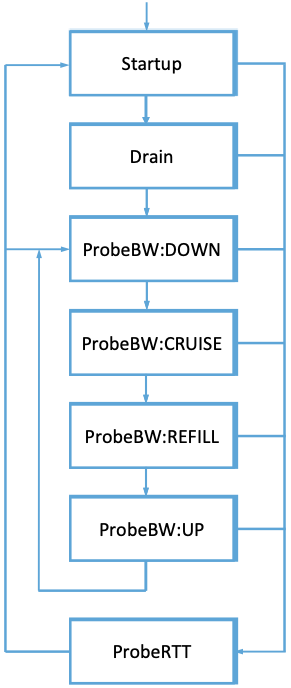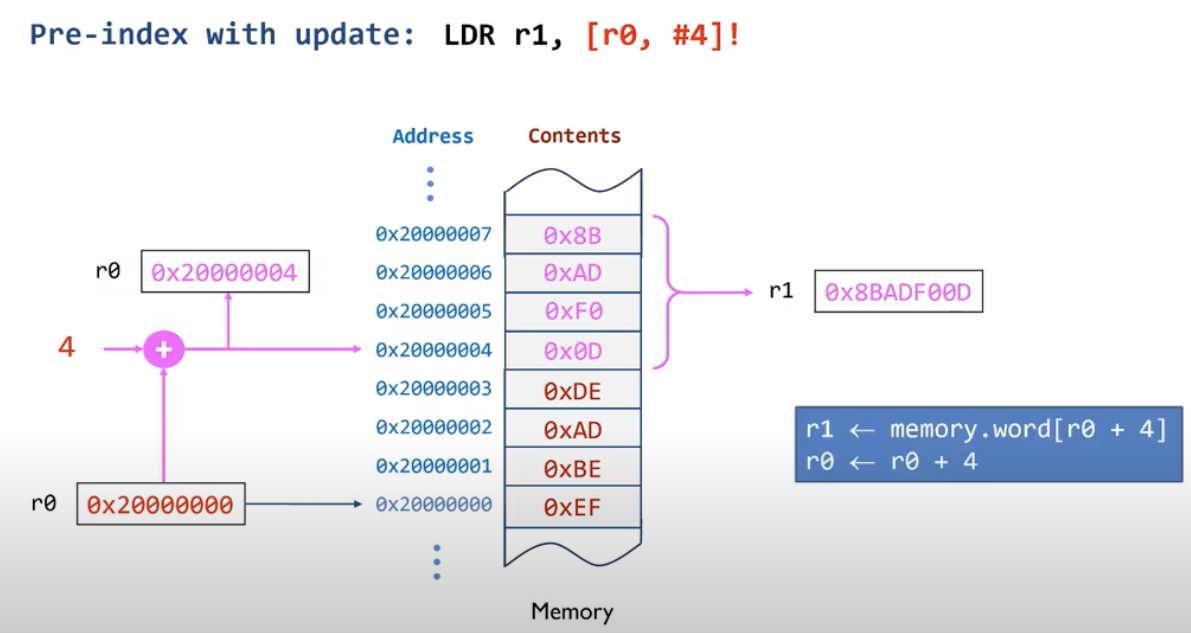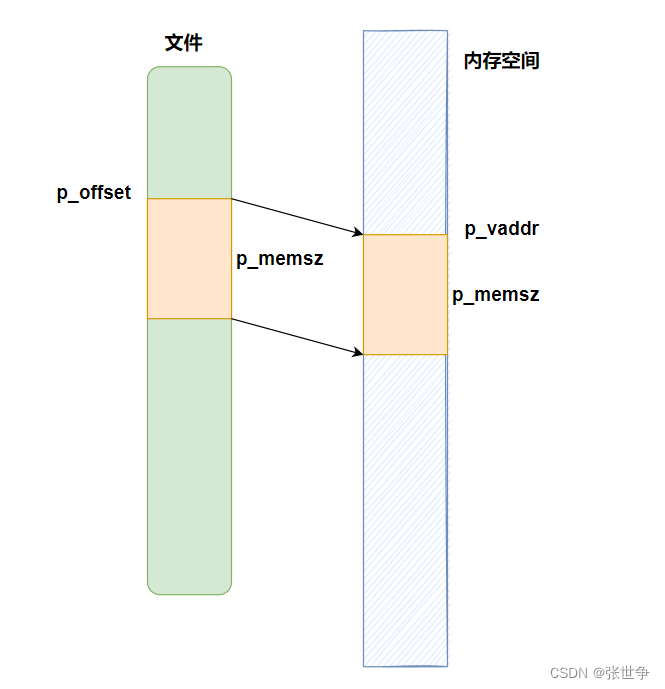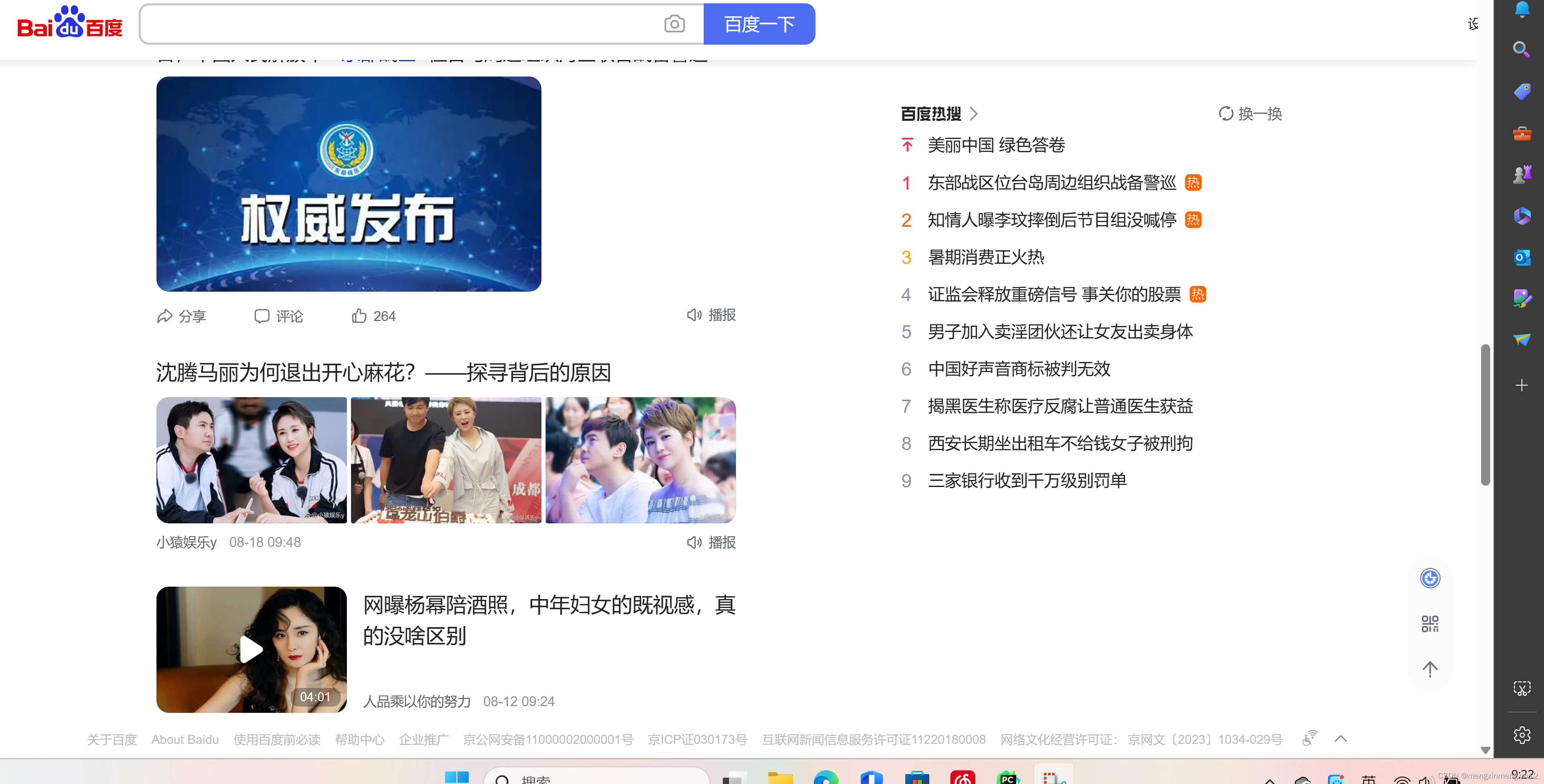C++11并发与多线程笔记(9) async、future、packaged_task、promise
- 1、std::async、std::future创建后台任务并返回值
- 2、std::packaged_task:打包任务,把任务包装起来
- 3、std::promise
- 3、小结
1、std::async、std::future创建后台任务并返回值
std::async: 是一个函数模板,用来启动一个异步任务,启动起来一个异步任务之后,它返回一个std::future对象,这个对象是个类模板。
什么叫“启动一个异步任务”?就是自动创建一个线程,并开始执行对应的线程入口函数,它返回一个std::future对象,这个std::future对象中就含有线程入口函数所返回的结果,我们可以通过调用future对象的成员函数get()来获取结果。
“future”将来的意思,也有人称呼std::future提供了一种访问异步操作结果的机制,就是说这个结果你可能没办法马上拿到,但是在不久的将来,这个线程执行完毕的时候,你就能够拿到结果了,所以,大家这么理解:future中保存着一个值,这个值是在将来的某个时刻能够拿到。
std::future对象的get()成员函数会等待线程执行结束并返回结果,拿不到结果它就会一直等待,感觉有点像join()。但是,它是可以获取结果的。
std::future对象的wait()成员函数,用于等待线程返回,本身并不返回结果,这个效果和 std::thread 的join()更像。
#include <iostream>
#include <future>
using namespace std;
class A {
public:
int mythread(int mypar) {
cout << mypar << endl;
cout << "mythread() start" << "threadid = " << std::this_thread::get_id() << endl;
std::chrono::milliseconds dura(5000);//定义一个5秒的时间
std::this_thread::sleep_for(dura);//创建一个线程并开始执行,绑定关系
cout << "mythread() end" << "threadid = " << std::this_thread::get_id() << endl;//卡在这里等待mythread()执行完毕,拿到结果
return mypar;
}
};
int mythread() {
cout << "mythread() start" << "threadid = " << std::this_thread::get_id() << endl;
std::chrono::milliseconds dura(5000);//定义一个5秒的时间
std::this_thread::sleep_for(dura);//创建一个线程并开始执行,绑定关系
cout << "mythread() end" << "threadid = " << std::this_thread::get_id() << endl;//卡在这里等待mythread()执行完毕,拿到结果
return 5;
}
int main() {
A a;
int tmep = 12;
cout << "main" << "threadid = " << std::this_thread::get_id() << endl;
std::future<int> result1 = std::async(mythread);
cout << "continue........" << endl;
cout << result1.get() << endl; //卡在这里等待mythread()执行完毕,拿到结果,只能使用一次
//类成员函数
std::future<int> result2 = std::async(&A::mythread, &a, temp); //第二个参数是对象引用才能保证线程里执行的是同一个对象
cout << result2.get() << endl;
//或者result2.wait(); //等待线程返回,本身不返回结果
cout << "good luck" << endl;
return 0;
}
我们通过向std::async()传递一个参数,该参数是std::launch类型(枚举类型),来达到一些特殊的目的:
- std::lunch::deferred:
(defer推迟,延期)表示线程入口函数的调用会被延迟,一直到std::future的wait()或者get()函数被调用时(由主线程调用)才会执行;如果wait()或者get()没有被调用,则不会执行。
重点:实际上根本就没有创建新线程。std::launch::deferred意思时延迟调用,并没有创建新线程,是在主线程中调用的线程入口函数。
#include <iostream>
#include <future>
using namespace std;
class A {
public:
int mythread(int mypar) {
cout << mypar << endl;
cout << "mythread() start" << "threadid = " << std::this_thread::get_id() << endl;
std::chrono::milliseconds dura(5000);
std::this_thread::sleep_for(dura);
cout << "mythread() end" << "threadid = " << std::this_thread::get_id() << endl;
return mypar;
}
};
int main() {
A a;
int temp = 12;
cout << "main" << "threadid = " << std::this_thread::get_id() << endl;
cout << "continue........" << endl;
std::future<int> result1 = std::async(std::launch::deferred, &A::mythread, &a, temp);
cout << result1.get() << endl;
//或者result2.wait();
cout << "I love China!" << endl;
return 0;
}
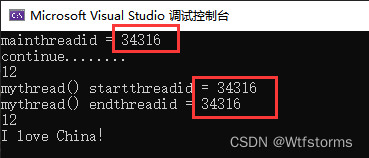
- std::launch::async,在调用async函数的时候就开始创建新线程,不添加标记,默认用的就是std::launch::async标记。
int main() {
A a;
int temp = 12;
cout << "main" << "threadid = " << std::this_thread::get_id() << endl;
cout << "continue........" << endl;
std::future<int> result1 = std::async(std::launch::async, &A::mythread, &a, temp);//使用std::launch::async标记
cout << result1.get() << endl;
//或者result2.wait();
cout << "I love China!" << endl;
return 0;
}
- 同时使用std::launch::async和std::lunch::deferred标记,并不能在新线程中延迟调用。
2、std::packaged_task:打包任务,把任务包装起来
类模板,它的模板参数是各种可调用对象,通过packaged_task把各种可调用对象包装起来,方便将来作为线程入口函数来调用。
#include <thread>
#include <iostream>
#include <future>
using namespace std;
int mythread(int mypar) {
cout << mypar << endl;
cout << "mythread() start" << "threadid = " << std::this_thread::get_id() << endl;
std::chrono::milliseconds dura(5000);
std::this_thread::sleep_for(dura);
cout << "mythread() end" << "threadid = " << std::this_thread::get_id() << endl;
return 5;
}
int main() {
cout << "main" << "threadid = " << std::this_thread::get_id() << endl;
//我们把函数mythread通过packaged_task包装起来
//参数是一个int,返回值类型是int
//方法1
std::packaged_task<int(int)> mypt(mythread);
std::thread t1(std::ref(mypt), 1);//线程开始执行
t1.join();//等待线程执行完毕
std::future<int> result = mypt.get_future();
//std::future对象里包含有线程入口函数的返回结果,这里result保存mythread返回的结果。
cout << result.get() << endl;
return 0;
}
可调用对象可由函数换成lambda表达式
int main() {
//方法2,用lambda表达式
std::packaged_task<int(int)> mypt([](int mypar){
cout << mypar << endl;
cout << "mythread() start" << "threadid = " << std::this_thread::get_id() << endl;
std::chrono::milliseconds dura(5000);
std::this_thread::sleep_for(dura);
cout << "mythread() end" << "threadid = " << std::this_thread::get_id() << endl;
return 5;
});
std::thread t1(std::ref(mypt), 1);
t1.join();
std::future<int> result = mypt.get_future();
//std::future对象里包含有线程入口函数的返回结果,这里result保存mythread返回的结果。
cout << result.get() << endl;
cout << "I love China!" << endl;
return 0;
}
packaged_task包装起来的可调用对象还可以直接调用,从这个角度来讲,packaged_task对象也是一个可调用对象
lambda的直接调用
int main() {
//方法2,用lambda表达式
std::packaged_task<int(int)> mypt([](int mypar){
cout << mypar << endl;
cout << "mythread() start" << "threadid = " << std::this_thread::get_id() << endl;
std::chrono::milliseconds dura(5000);
std::this_thread::sleep_for(dura);
cout << "mythread() end" << "threadid = " << std::this_thread::get_id() << endl;
return 5;
});
//packaged_task包装起来的可调用对象还可以直接调用,所以从这个角度来讲,pakcaged_task对象,也是一个可调用对象;
mypt(105);//直接调用,相当于函数调用
std::future<int> result=mypt.get_future();
cout<<result.get()<<endl;
return 0;
}
包装后存放容器里
vector<std::packaged<int(int)>> mytasks;
int main() {
//方法2,用lambda表达式
std::packaged_task<int(int)> mypt([](int mypar){
cout << mypar << endl;
cout << "mythread() start" << "threadid = " << std::this_thread::get_id() << endl;
std::chrono::milliseconds dura(5000);
std::this_thread::sleep_for(dura);
cout << "mythread() end" << "threadid = " << std::this_thread::get_id() << endl;
return 5;
});
mytasks.push_back(std::move(mypt));//入容器,进去用了移动语义,入进去之后mypt就为空
std::packaged_task<int(int)>mypt2;
auto iter=mytask.begin();
mypt2=std::move(*iter);//移动语义
mytasks.erase(iter);//删除第一个元素,迭代已经失效了,所以后续代码不可以再使用iter
mypt2(105);//直接调用,相当于函数调用
std::future<int> result=mypt2.get_future();
cout<<result.get()<<endl;
return 0;
}
3、std::promise
类模板,我们能够在某个线程中给它赋值,然后我们可以在其他线程中,把这个值取出来
#include <thread>
#include <iostream>
#include <future>
using namespace std;
void mythread(std::promise<int> &tmpp, int clac) {
//做一系列复杂的操作
clac++;
clac *=10;
cout << "mythread() start" << "threadid = " << std::this_thread::get_id() << endl;
std::chrono::milliseconds dura(5000);
std::this_thread::sleep_for(dura);
cout << "mythread() end" << "threadid = " << std::this_thread::get_id() << endl;
int result = clac;//保存结果
tmp.set_value(result); //结果保存到了tmp这个对象中
return;
}
int main() {
std::promise<int> myprom;
std::thread t1(mythread, std::ref(myprom), 180);
t1.join(); //在这里线程已经执行完了
std::future<int> fu1 = myprom.get_future(); //promise和future绑定,用于获取线程返回值
auto result = fu1.get();//get只能调用1次
cout << "result = " << result << endl;
cout<<"I love China!"<<endl;
}
总结:通过promise保存一个值,在将来某个时刻我们通过把一个future绑定到这个promise上,来得到绑定的值
使用两个子进程
#include <thread>
#include <iostream>
#include <future>
using namespace std;
void mythread(std::promise<int> &tmpp, int clac) {
//做一系列复杂的操作
clac++;
clac *=10;
cout << "mythread() start" << "threadid = " << std::this_thread::get_id() << endl;
std::chrono::milliseconds dura(5000);
std::this_thread::sleep_for(dura);
cout << "mythread() end" << "threadid = " << std::this_thread::get_id() << endl;
int result = clac;//保存结果
tmp.set_value(result); //结果保存到了tmp这个对象中
return;
}
void mythread2(std::future<int> &tmpf){
auto result=tmpf.get();
cout<<"mythread2.result"<<result<<endl;
return;
}
int main() {
std::promise<int> myprom;
std::thread t1(mythread, std::ref(myprom), 180);
t1.join(); //在这里线程已经执行完了
std::future<int> fu1 = myprom.get_future(); //promise和future绑定,用于获取线程返回值
std::thread t2(mythread2,std::ref(ful));
t2.join();//等mythread2线程执行完毕
cout<<"I love China!"<<endl;
}
总结:第一个线程1(t1) 计算了一个结果,结果通过future对象给到第二个线程2(t2)。
注意:使用thread时,必须 join() 或者 detach() 否则程序会报异常
3、小结
我们学习这些东西的目的并不是,要把他们都用到实际开发中。
相反,如果我们能够用最少的东西写出一个稳定的,高效的多线程程序,更值得赞赏。
我们为了成长必须阅读一些高手写的代码,从而实现自己代码的积累;



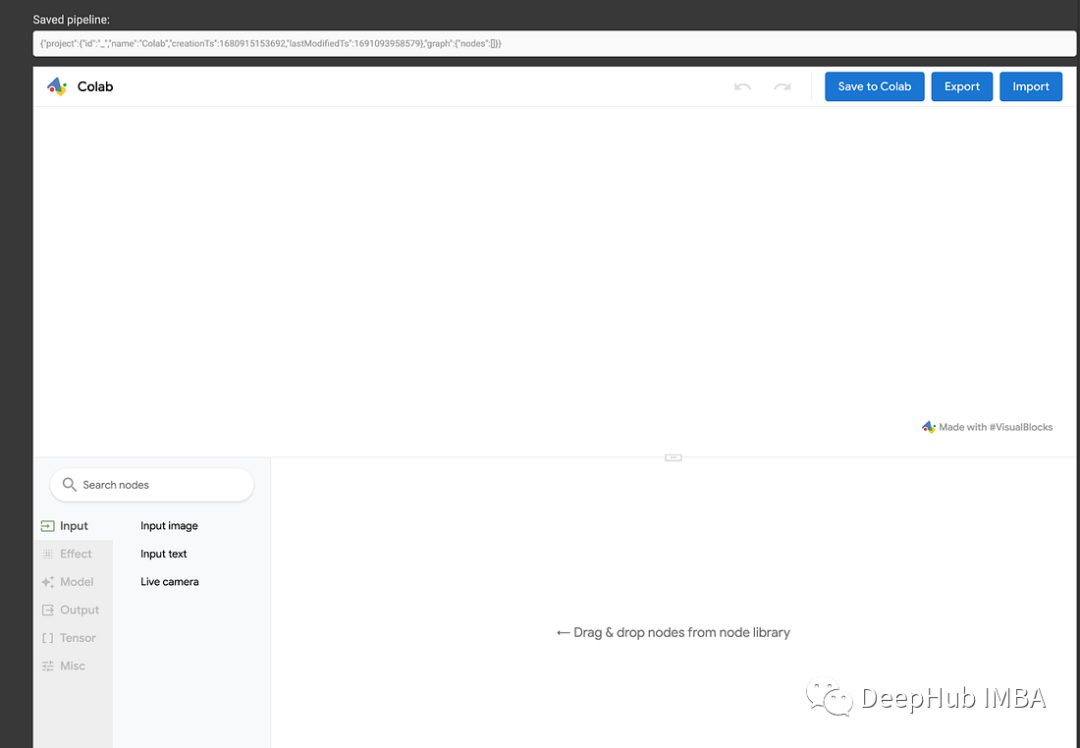
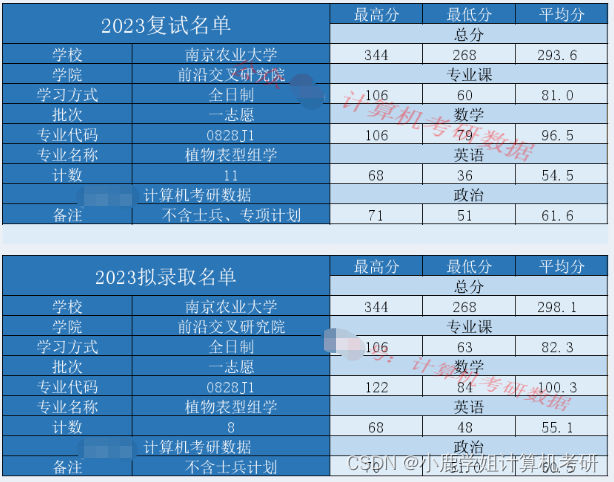

![[每周一更]-(第59期):31条MySQL数据库优化方案](https://img-blog.csdnimg.cn/ddb57fa0260a45d1b665b16321af3120.jpeg#pic_center)
